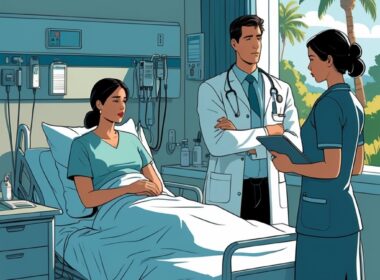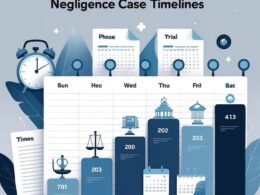Medical negligence cases in India have shaped the legal landscape between doctors and patients for decades. These cases reveal how courts try to balance patient rights with professional standards when treatment goes wrong.
Several famous medical negligence cases in India have led to landmark compensations and set legal precedents that protect both patients and healthcare providers. The Kunal Saha versus AMRI case stands out, where a family received 11 crore rupees after a doctor’s wife died from improper steroid treatment.
These cases show both sides of medical negligence issues. Some protect patients from real medical errors, while others highlight how innocent doctors can get caught in false accusations.
The tragic suicide of Dr. Archana Sharma shows how harassment and false charges can ruin medical careers and lives.
Key Takeaways
- Medical negligence cases in India have led to compensations as high as 11 crore rupees for victims of real malpractice.
- Courts use legal principles like “res ipsa loquitur” to decide when doctors are liable for patient deaths or injuries.
- These cases help protect patient rights while making sure doctors aren’t blamed for unavoidable complications.
What Is Medical Negligence in India?
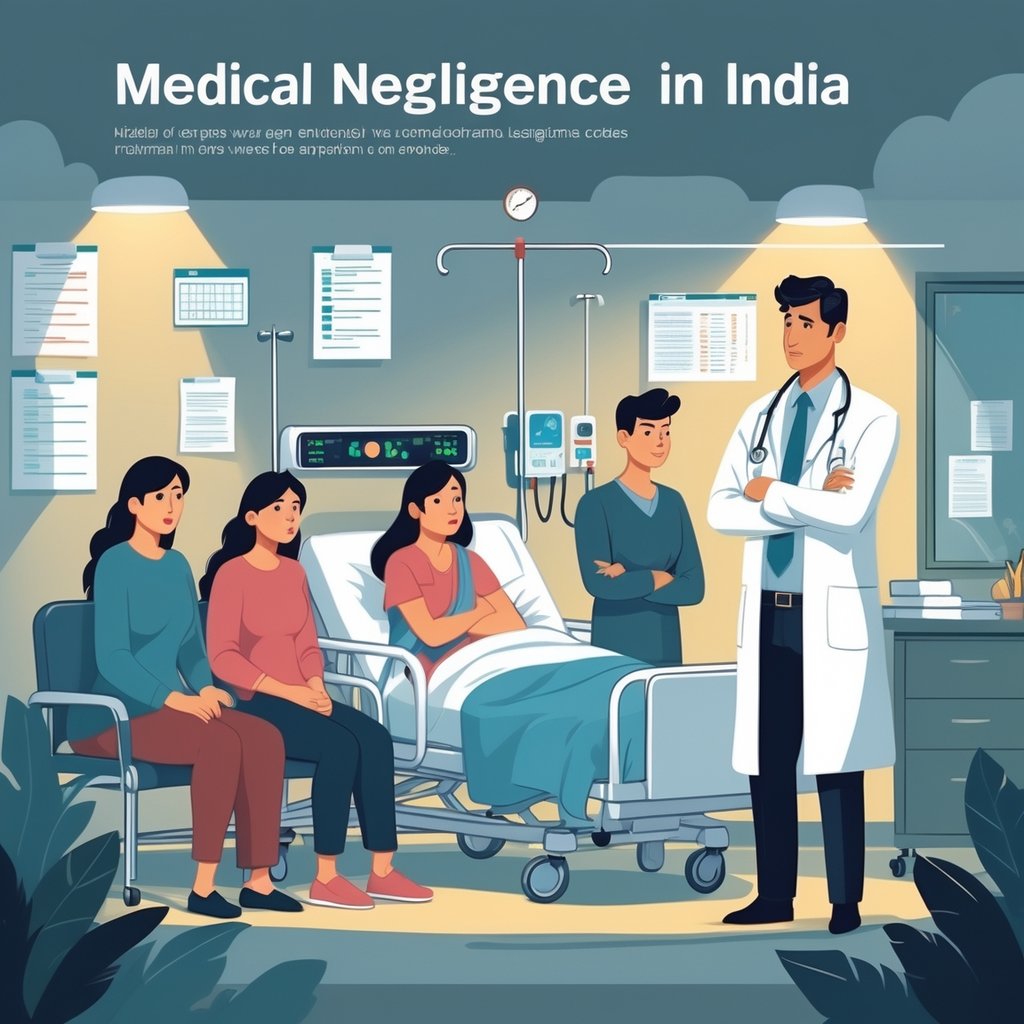
Medical negligence happens when healthcare providers don’t meet accepted standards of care, causing harm to patients. Indian law treats this as both a civil wrong under tort law and a possible criminal offense in severe cases.
Definition and Essential Elements
Medical negligence means a breach of duty of care by a medical practitioner that leads to harm, injury, or death of a patient. Proving medical negligence requires four key elements.
The four essential elements are:
- Duty of care — The doctor owed you a legal duty.
- Breach of duty — The doctor failed to meet accepted standards.
- Causation — The breach directly caused your injury.
- Damages — You suffered actual harm or loss.
Medical negligence cases in India fall under tort law, so they’re treated as civil wrongs.
You can also pursue criminal charges in cases of gross negligence. To prosecute a medical professional for negligence under criminal law, you have to show that the accused did something or failed to do something that caused serious harm.
Duty of Care in Medical Practice
When you visit a doctor, they owe you a duty of care. This duty starts the moment you become their patient.
The duty of care means your doctor must act in your best interests. They have to provide treatment that meets accepted medical standards.
Your doctor’s duty covers:
- Proper diagnosis using reasonable skill.
- Appropriate treatment for your condition.
- Clear communication about risks and options.
- Adequate follow-up care when needed.
This duty exists even if you get free treatment. It applies in government hospitals, private clinics, and emergencies.
Your doctor can’t just walk away from this duty without good reason. They need to make sure you get continuity of care or a proper referral to someone qualified.
Standard of Care and Breach in Indian Law
The standard of care is the level of skill and care that a reasonably competent doctor would provide. You should expect this from any medical professional treating you.
Indian courts look at what other qualified doctors would do in similar situations to decide if there was a breach. The standard varies based on the doctor’s specialty and available resources.
Key factors courts consider:
| Factor | Description |
|---|---|
| Medical knowledge | Current accepted medical practices |
| Available facilities | Equipment and resources at the facility |
| Emergency situations | Time constraints and available options |
| Patient’s condition | Severity and complexity of the case |
You have to prove your doctor’s conduct fell below this standard. Expert medical testimony usually helps set what the proper standard should have been.
A breach must be significant to count as negligence. Minor mistakes in judgment usually don’t count as medical malpractice under Indian law.
Legal Framework Governing Medical Negligence Cases

Medical negligence cases in India rely on several legal systems, including consumer protection laws, tort principles, and special doctrines. The legal framework for medical negligence combines consumer rights, court precedents, and evidence standards to protect patients while treating healthcare providers fairly.
Consumer Protection Act and Medical Services
The Consumer Protection Act 2019 treats patients as consumers if they pay for medical services. This law replaced the older version and expanded patient rights.
You can file complaints against hospitals and doctors for poor medical services under this act. It covers both private and government hospitals where you pay fees.
Key provisions:
- Compensation limits: District forums handle cases up to ₹1 crore.
- Time limits: You must file complaints within 2 years of the incident.
- Free services: Government hospitals giving free treatment might still be liable.
The Consumer Protection Act framework makes it easier for patients to seek remedies without long court procedures. You can approach consumer forums directly, even for smaller claims.
Role of the Supreme Court of India
The Supreme Court of India has shaped medical negligence law through major judgments that set the rules for deciding liability.
In Jacob Mathew v. State of Punjab, the court said doctors can’t be blamed for every failed treatment. The court explained that medical negligence needs proof of care that falls below accepted standards.
Important Supreme Court guidelines:
- Bolam Test: Medical professionals must meet standards accepted by responsible medical opinion.
- Expert Evidence: You need expert testimony to prove breach of duty.
- Criminal Liability: Doctors face criminal charges only in cases of gross negligence.
Judicial trends in medical negligence show courts trying to balance patient rights with protecting doctors from weak lawsuits. The Supreme Court says failed treatment alone doesn’t prove negligence.
Doctrine of Res Ipsa Loquitur
Res ipsa loquitur means “the thing speaks for itself.” Courts use it when medical negligence looks obvious from the situation.
This doctrine helps you prove negligence without detailed expert testimony in clear cases. It applies when the incident wouldn’t have happened without negligence, the defendant had control, and you didn’t contribute to the harm.
Common examples:
- Surgical instruments left inside patients after surgery.
- Wrong-site surgery on the incorrect body part.
- Medication errors with clearly wrong drugs or doses.
Once you show this, healthcare providers have to explain how the incident happened without negligence. This legal mechanism makes it easier to show basic evidence of medical negligence in obvious cases.
Indian courts use this doctrine carefully, knowing that medicine involves risks and uncertainties that make it different from other professions.
Landmark Supreme Court Judgments
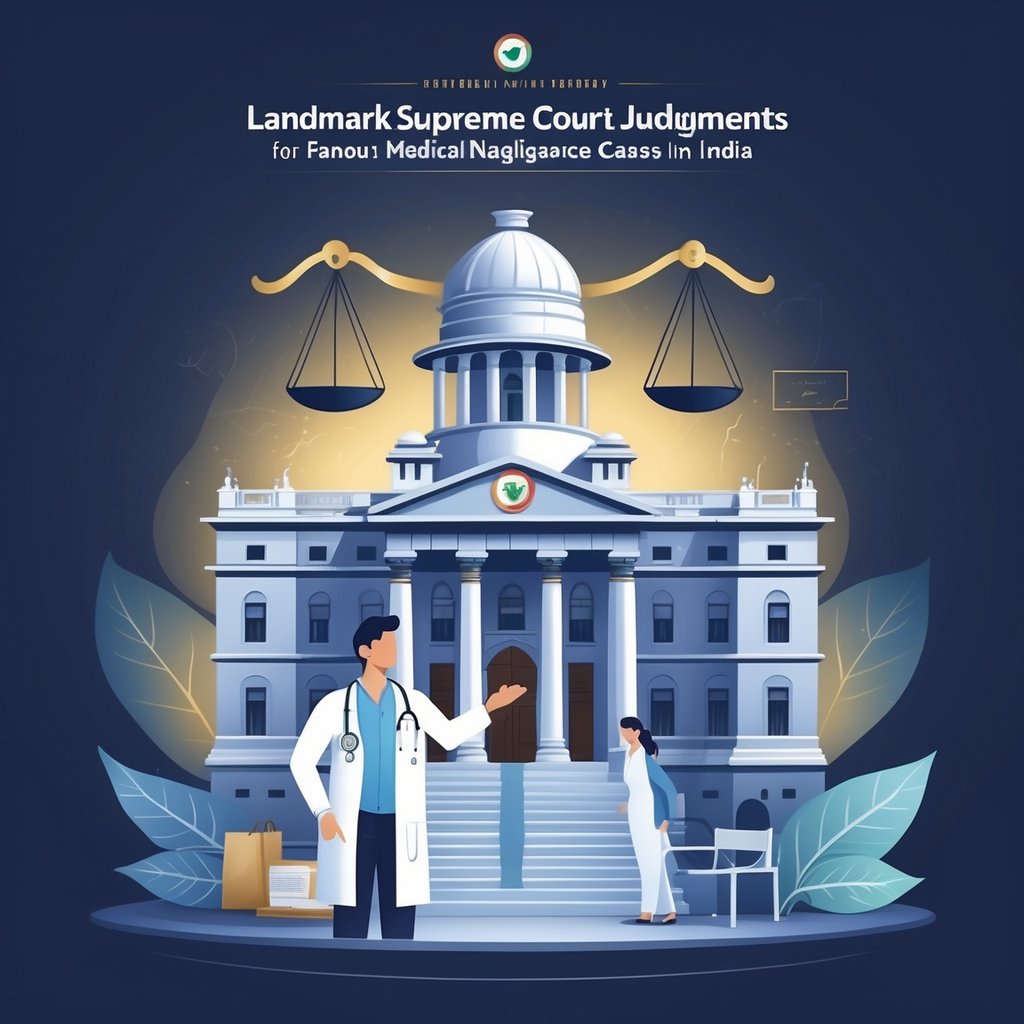
The Supreme Court of India has set crucial legal principles through several key medical negligence cases. These judgments define when doctors can face criminal charges, set standards for proving negligence, and give guidelines for arrests in medical cases.
Jacob Mathew vs. State of Punjab
This 2005 case is probably the most important judgment for medical negligence in India. The Supreme Court wrote clear rules to protect doctors from unfair prosecution.
The court said error in judgment is not negligence. If you follow standard treatment guidelines, you can’t be charged with negligence even if the treatment fails.
Key protections:
- Doctors can’t be arrested without enough evidence
- Expert medical opinion is needed before filing charges
- Treatment failure by itself doesn’t prove negligence
- Police can face legal action for wrongful arrests
The judgment brought the Bolam Test into Indian law. It asks whether your actions match what other reasonable doctors would do in the same situation.
The court also said you’re not liable for every injury during treatment. Only gross negligence that falls far below professional standards can lead to criminal charges.
Dr. Kunal Saha vs. Dr. Sukumar Mukherjee
This case involved the death of Anuradha Saha at AMRI Hospital in Kolkata in 1998. Dr. Kunal Saha fought for justice after his wife died from alleged medical negligence.
The Supreme Court awarded ₹6.08 crores in compensation, one of the highest amounts in Indian medical negligence cases. The court found several failures in treatment protocols.
The case highlighted:
- Importance of proper diagnosis and treatment protocols
- Hospital liability for staff actions
- Right of patients to get adequate medical care
This judgment showed that when gross negligence causes death, both individual doctors and hospitals can face huge financial liability.
Indian Medical Association vs. V.P. Shantha
The 1995 V.P. Shantha case brought medical services under consumer protection laws. This landmark judgment on medical negligence changed how patients claim compensation.
Before this case, you couldn’t file consumer complaints against doctors. The Supreme Court ruled that medical services count as “services” under the Consumer Protection Act.
The judgment established:
- Paying patients can file consumer complaints
- Free treatment at government hospitals is excluded
- Medical negligence is “deficiency in service”
- Consumer courts can hear medical negligence cases
This decision made it easier for patients to get compensation. You don’t need to go through long civil court procedures for smaller claims.
Kusum Sharma & Ors vs. Batra Hospital & Medical Research Centre
This 2010 case clarified what counts as medical negligence. The Supreme Court stressed that taking calculated risks to save patients is not negligence.
The court noted that medical science comes with risks. Every surgery carries dangers, and you can’t blame doctors for all bad outcomes.
Important principles from this case:
- High risk procedures may be needed to save lives
- Treatment failure doesn’t always mean negligence
- Medical science brings benefits but also risks
The judgment said error in judgment is not negligence. If you make decisions based on reasonable medical judgment, you’re protected even if the results are poor.
Other Notable Medical Negligence Cases
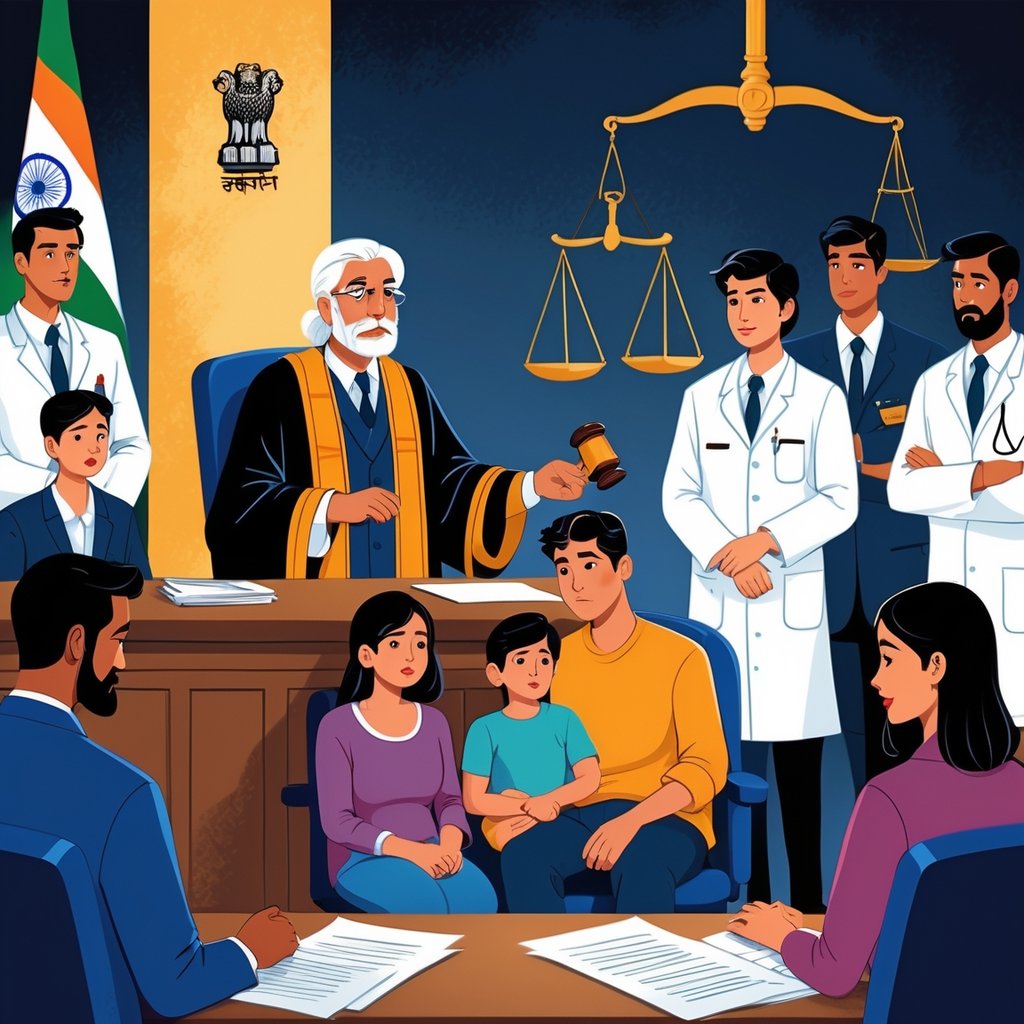
Some landmark cases have shaped how Indian courts handle medical negligence. They set the tone for doctor accountability, criminal prosecution, and compensation.
Poonam Verma vs. Dr. Ashwin Patel
This case put a spotlight on proper surgical procedures and post-op care. The court checked if the doctor followed standard protocols during treatment.
Key Legal Issues:
- Ignoring surgical protocols
- Poor post-op monitoring
- Informed consent concerns
The judgment made it clear that doctors must maintain care standards from start to finish. Good initial treatment doesn’t excuse later mistakes.
Doctors must keep monitoring patients after surgery. Hospitals need systems to track recovery and spot complications quickly.
Lakshmi Rajan vs. Malar Hospital
Here, the focus was on hospital administration and the duty of care medical institutions owe patients. The court looked at both the doctor’s and the hospital’s responsibilities.
Hospital Responsibilities Established:
- Staff need proper training and supervision
- Medical equipment must be maintained
- Emergency protocols should be clear
- Patient safety systems are essential
Hospitals can’t just blame individual doctors for mistakes. They’re responsible for what their staff do during treatment.
Private hospitals advertising high-end care must actually provide it. They can’t cut corners if they claim expertise.
This case also looked at how to calculate compensation for victims. The court gave some guidelines for figuring out fair financial awards based on the harm done.
Moni vs. State of Kerala
The Moni vs State of Kerala case set standards for judging doctor competency in negligence claims. This 2011 ruling defined the benchmark for doctors in court.
Legal Standards Established:
- Ordinary skilled practitioner test
- Reasonable competency
- Multiple valid treatment options
- Professional judgment protection
Doctors don’t need to be the top expert in their field. They just have to show the ordinary skill of a competent practitioner.
The court accepted that more than one treatment approach can be correct. If a doctor follows any accepted standard, that’s not negligence.
This case protects doctors making tough calls under pressure. The court got that reasonable doctors might choose different, but still valid, treatments.
Legal Principles Shaped by These Cases
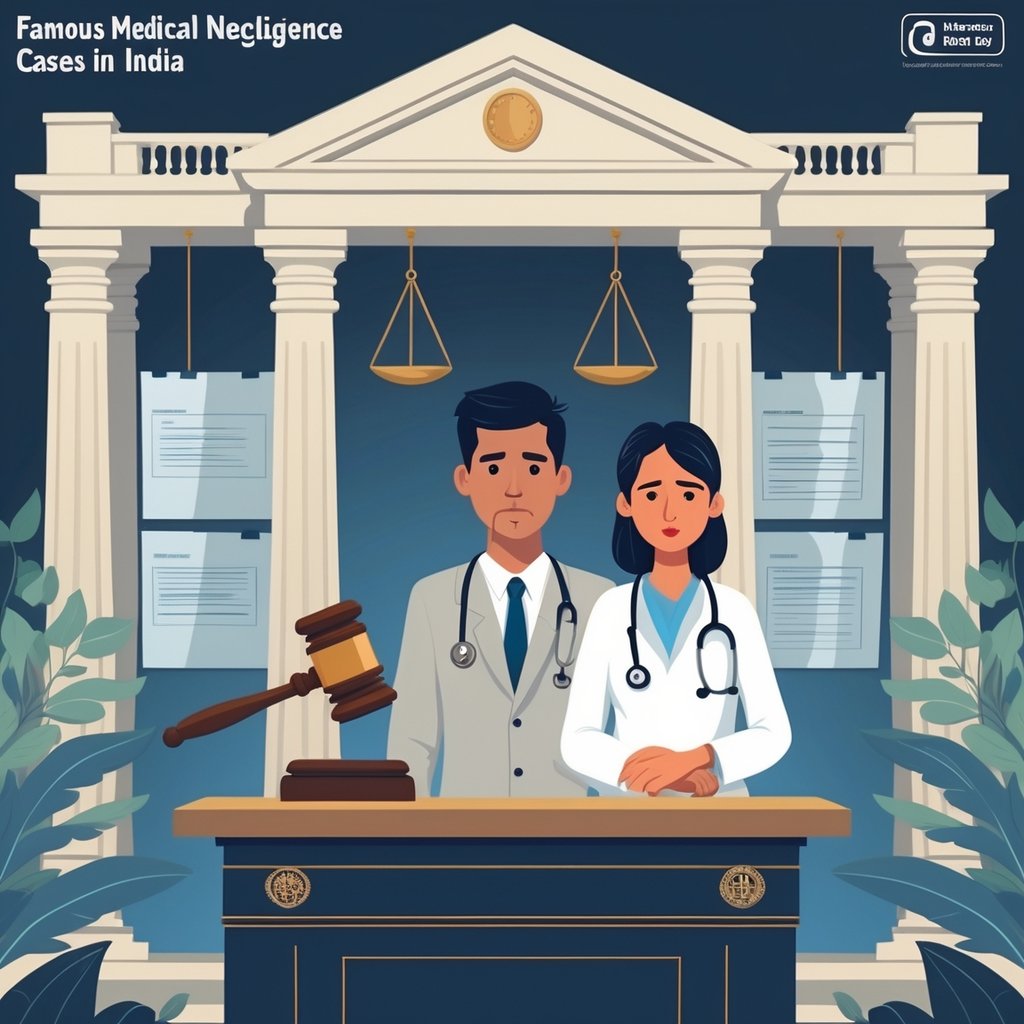
Medical negligence cases in India have set a few core principles for malpractice claims. These decisions brought clear standards for duty, consent, and compensation.
Duty of Care and Breach
The Kusum Sharma vs Batra Hospital case said doctors must meet the ordinary standard in their field. No one expects them to be superhuman.
Courts use the Bolam test to check for breach of duty. They compare your doctor’s actions to what a reasonably competent doctor would do.
The Moni vs State of Kerala judgment clarified that there can be more than one proper treatment standard. If the doctor follows any accepted practice, that’s not negligent.
Courts look at:
- Medical knowledge at the time
- Emergency situations
- Available resources
- Doctor’s specialization
The Tamil Nadu Siddha Medical case pointed out that doctors in emergencies do their best to help. Courts know doctors don’t gain from acting negligently.
Informed Consent and Patient Rights
The Lakshmi Rajan vs Malar Hospital case became a landmark Supreme Court ruling for patient consent. It confirmed your right to understand treatment risks before any procedure.
Doctors have to explain risks in plain language. They can’t mislead or scare you just to make money.
The Mrs. Swapnil Mishra vs Pushpanjali Healthcare ruling made it clear: honest information is your right.
Consent means:
- Clear explanation of the procedure
- Risks and benefits discussed
- Alternatives offered
- You can refuse treatment
Now courts see patients as consumers who deserve protection. This shift changed doctor-patient relationships.
Calculation of Damages
The Dr. Kunal Saha vs Dr. Sukumar Mukherjee case changed how courts calculate compensation. Now they use the multiplier method from the Motor Vehicle Act for deaths.
This method replaced random lump-sum awards. Deaths from medical negligence get treated like industrial or motor accidents.
The Smt Saroj Sharma case said you should get enough money to be in the same spot as before the negligence.
Courts consider:
- Victim’s age
- Income and earning potential
- Medical expenses
- Future treatment costs
- Pain and suffering
The Dr. Indu Sharma vs Apollo Hospital judgment held specialist hospitals to higher standards. If they charge premium fees, they must deliver premium care and face higher compensation if they mess up.
Impact on Medical Practice and Ethics

Medical negligence cases have changed how Indian doctors work. There’s more caution in treatment and stricter ethics now.
Defensive Medicine and Risk Management
Many doctors now practice defensive medicine because they fear lawsuits. They order extra tests and procedures, sometimes just to cover themselves.
The landmark judgments show that about 25 percent of doctors worry about being sued. Another 14 percent fear criminal cases.
Defensive habits include:
- Ordering lots of diagnostic tests
- Referring patients to specialists even when not needed
- Avoiding risky procedures
- Documenting every little thing
This bumps up healthcare costs for patients. Sometimes, it even delays treatment.
Courts have said reasonable risks to save lives aren’t negligence. Errors in judgment aren’t always the same as medical negligence.
Role of Medical Professionals and Ethics
Doctors have to follow ethical standards from medical councils. These rules protect patients and doctors alike.
Medical professionals have legal duties. They must provide care that meets reasonable standards for their specialty.
Key ethics include:
- Informed consent for all procedures
- Proper documentation of decisions
- Sticking to standard guidelines
- Ongoing medical education
The Medical Council of India enforces these standards. Doctors who break the rules can lose their license.
Courts protect doctors acting in good faith. The legal framework says sections 80, 81, 88, 92, and 93 of the Indian Penal Code shield them from malicious lawsuits.
Reforms and Registration of Practitioners
Recent reforms aim to raise medical standards. The Bharatiya Nyaya Sanhita 2023 cut maximum jail time for doctors from five to two years.
Doctors now have stricter registration rules. They must stay registered with state medical councils.
Recent changes:
- Mandatory continuing education
- Regular license renewals
- Tougher entry for medical schools
- Better complaint systems
The government plans to exempt doctors from criminal charges in negligence cases. This should ease some of the fear doctors feel.
Medical colleges now teach more about law and patient rights. Students learn documentation basics early on.
These changes aim to give patients better care and protect good doctors from pointless lawsuits.
Frequently Asked Questions
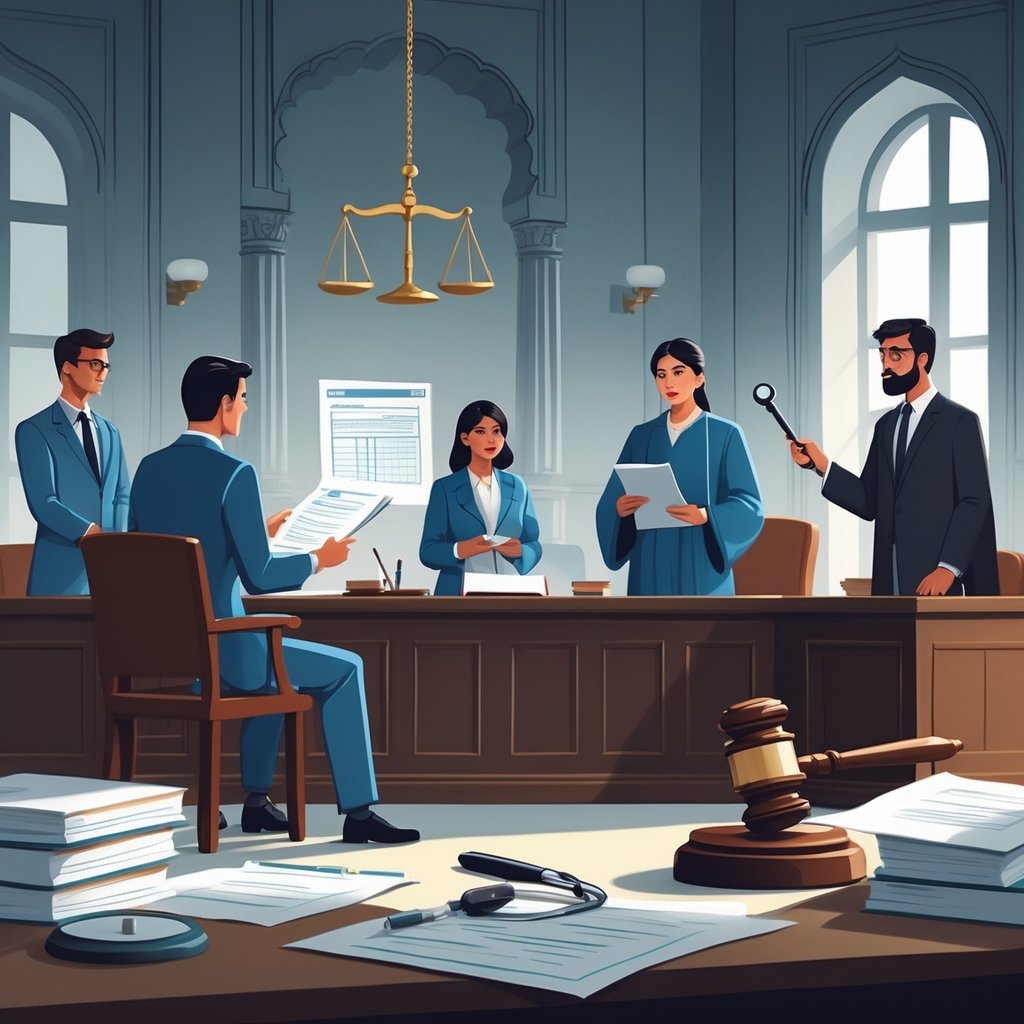
Indian courts have set specific legal standards through landmark cases. Some resulted in compensation awards of several crores. The legal definition has changed a lot since Kusum Sharma, shaping modern patient rights and hospital accountability.
What are some landmark judgements in Indian legal history regarding medical negligence?
The Kusum Sharma & Ors vs Batra Hospital case from 2010 said criminal prosecution needs proof that a doctor did something no reasonable professional would do. This case set the bar for gross negligence.
In the Jacob Mathew case, the Supreme Court ruled that medical experts must review complaints before starting criminal cases. This protects doctors from being arrested without proper checks.
The Dr. Kunal Saha vs Dr. Sukumar Mukherjee case from 2011 brought in the multiplier method for compensation. This system is similar to what’s used in vehicle accident cases.
Fortis Escort Hospital vs Amarjeet Singh (2017) clarified that consumer forums don’t always need experts for simple cases. Each case should be judged on its own facts.
Can you list notable cases of medical negligence that led to significant legal reforms in India?
The Tamil Nadu Siddha Medical vs Indian Medical Association case (2011) made expert inquiry mandatory before criminal court action. This stops harassment of doctors without evidence.
Suresh vs The State Of Tamil Nadu (2014) said consumer forums must refer cases to medical experts before issuing notices. This seven-day inquiry protects doctors from bogus complaints.
The Dr. A.K. Gupta case (2018) required specialized medical committees to check negligence claims first. This blocks direct criminal action without expert opinion.
These cases built a system needing expert evaluation before legal action. The reforms try to balance patient rights with doctor protection.
Which cases of medical negligence in India resulted in the highest compensation awards?
The Dr. Kunal Saha case set the multiplier method for compensation, moving away from random awards. This often leads to higher, more justified payouts.
Corporate hospitals like Fortis and Apollo face higher compensation expectations due to their advertised top facilities. Courts expect more from them and give bigger awards if they fail.
The Dr. Indu Sharma vs Indraprastha Apollo Hospital case (2015) said specialist hospitals must perform at higher levels. Their premium charges mean higher compensation if they’re negligent.
Compensation depends on the victim’s age, income, and dependents. Recent cases show awards from lakhs to several crores, depending on the facts.
What are the legal criteria used to establish medical negligence in Indian courts?
Indian courts use the Bolam test standard, requiring proof that medical care fell below reasonably competent practitioner levels. You need to show the doctor didn’t use the ordinary skill expected in their field.
The legal framework asks for proof of breach of duty through omission or commission. Judges look at what a reasonable doctor would have done in the same situation.
Once you show initial negligence, the hospital or doctor must prove they provided adequate care. This shift in burden of proof can help patients in tricky medical cases.
Courts also think about the current state of medical knowledge at the time of treatment. The standards that existed when the care happened matter a lot.
How has the definition of medical negligence evolved in Indian case law over the years?
Early cases only looked at gross negligence, basically criminal-level mistakes. Now, courts include civil liability for not meeting professional standards, even if there’s no criminal intent.
The shift from simple negligence to requiring expert medical opinion changed things a lot. Courts want a specialized committee to weigh in before moving forward.
Recent judgments separate honest medical errors from true negligence. Judges get that medicine always carries some risk and uncertainty.
The definition now covers corporate hospital liability too. Specialist hospitals face higher expectations because they advertise better facilities and expertise.
What role have Indian medical negligence cases played in shaping patient rights and hospital policies?
Medical negligence cases established patients as consumers with rights to quality healthcare services. This shift lets patients seek compensation through consumer forums, which feels like a big step for accountability.
Landmark cases pushed for mandatory protocols that force hospitals to keep proper medical records and documentation. With these records, it’s easier to track what happened if there’s a dispute.
The legal framework now requires informed consent procedures and transparent communication about treatment risks. Hospitals have to explain procedures and possible complications, so patients know what they’re getting into.
Courts have set minimum care standards for hospitals. That means having decent equipment, qualified staff, and emergency response plans to help avoid negligence claims.




